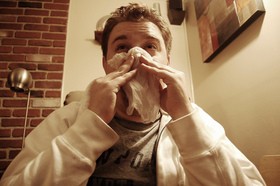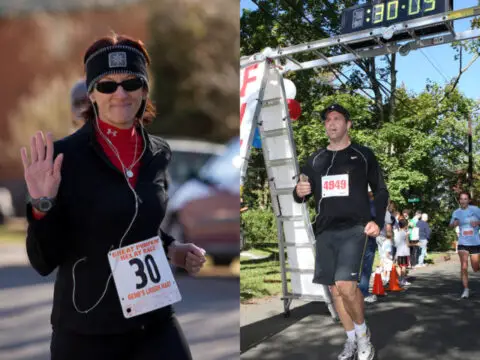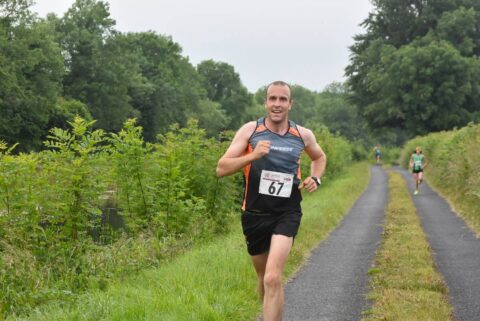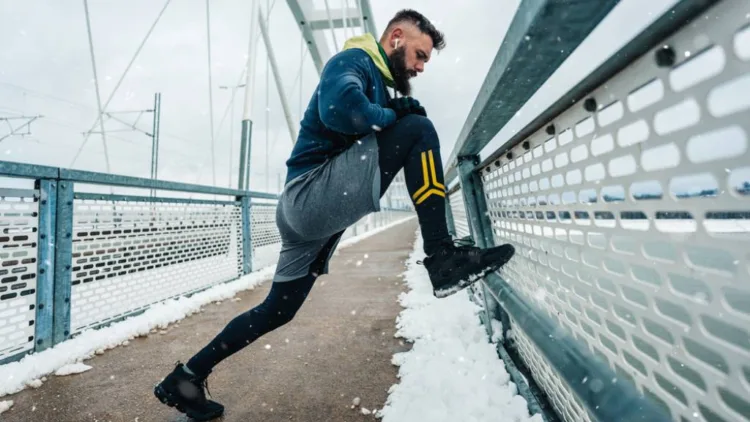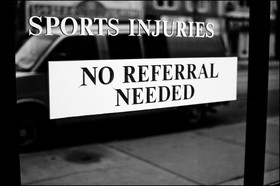 Swimmer’s shoulder, sports hernia, lower back muscle strain, tendonitis, groin pull and foot stress fracture are just a few of the sports injuries I have had to manage as a triathlete in training.
Swimmer’s shoulder, sports hernia, lower back muscle strain, tendonitis, groin pull and foot stress fracture are just a few of the sports injuries I have had to manage as a triathlete in training.
Triathletes with injuries often feel conflicted about how much of their training is necessary to scale back in order to achieve healing and recovery.
Recently, I was in the doctor’s office with a lower back issue. As the doctor was explaining my injury, my mind was already fast at work determining ways I could work around it in my training.
If you have had a recent sport injury, one of your main concerns will be how this is going to affect your training. There is not a one-size-fits-all answer, because each triathlete and each injury is unique. Returning too soon can increase your risk of re-injury or developing a chronic problem that will lead to a longer recovery. Waiting too long, however, can lead to unnecessary de-conditioning.
So, how does a triathlete train through nagging injuries?
First off, listen to your body.
There are warning signs that you have injured yourself and you must heed those signs.
During the acute recovery phase of an injury you should follow the R.I.C.E. principles (rest, ice, compression, and elevation) and limit your activity, allowing yourself time to heal.
Depending on the type and severity of your injury, treatment may also include medical care, surgery, various taping, bracing, or physical therapy treatments.
For this post, I’m thinking more in terms of a muscle strain type of injury as opposed to something more serious like a torn ligament or bone fracture.
Take Time Off From Training
I would be remiss without recommending that for any injury you should temporarily stop or scale back your triathlon training for a time after you experience the injury.
The answer the typical family physician is going to give for just about any sports injury is to take a couple weeks off. This sounds like an eternity to a triathlete in training. Most triathletes lament taking time off because they fear a loss of fitness. This fear must be put in perspective in order for the triathlete to think sensibly.
An endurance athlete can take up to 3 days off and experience virtually no decrease in fitness and may even increase fitness as a result of the benefits of recovery. The body of a serious triathlete is consistently taxed by the high demands of training and competition. Having a few extra recovery days in addition to scheduled rest days (which are too often too few) often aids the body of the triathlete.
The options for an injury are not just: (a) 2 weeks off or (b) no time off. When injured, the wise triathlete (not wanting to risk further injury) will go ahead and take the 2-3 days off, no questions asked. Remember, 2 to 3 days off will not result in a decrease in fitness. Don’t sweat it.
How To Manage Nagging Injuries As You Continue Training
 Research your injury.
Research your injury.
It’s important that you take the time to understand your specific injury and what kinds of measures need to be taken to ensure healing and recovery.
Two sites worth investigating are:
 Find what works.
Find what works.
For a specific sports injury that might require extended time for healing, you are going to have to experiment with what you can or can’t do.
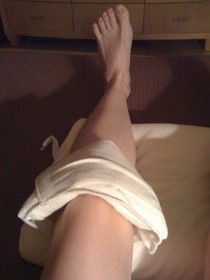 You may have an injury that requires you to stop or substantially reduce mileage in one area, but that doesn’t prohibit you from doing other things. For example, if your ankle or foot is injured, you still have options. Though you might not be able to run, swimming and biking or spinning are non-weight bearing exercises you could feasibly continue doing. Even if you have a leg or knee injury, you could very possibly continue swimming with the use of a pull buoy.
You may have an injury that requires you to stop or substantially reduce mileage in one area, but that doesn’t prohibit you from doing other things. For example, if your ankle or foot is injured, you still have options. Though you might not be able to run, swimming and biking or spinning are non-weight bearing exercises you could feasibly continue doing. Even if you have a leg or knee injury, you could very possibly continue swimming with the use of a pull buoy.
Don’t rule out the idea of incorporating some different forms of exercise as a means for coping with an injury. Kayaking or an upper body ergometer could be beneficial with a knee or leg injury. Shoulder or other upper body injuries may require you to stop or reduce swim training, but might not prohibit run and bike training. Stair climbers and elliptical trainers may be an option of long bike rides or runs agitate your shoulder or upper body injury.
Back injuries can be the most difficult to recover from. I would suggest talking with your doctor about the specific type of back injury you have and your exercise limitations before you decide how to modify your training. Walking, swimming or recumbent cycling are generally safe for those with low back pain and this will help you maintain cardiovascular fitness as you recover.
 Experiment to find what works for you.
Experiment to find what works for you.
I recently had a sports hernia problem and found that it flared up when I rode my bike outdoors, but was fine when I used an indoor spin bike.
On the spin bike, I had more control over body positioning and movement, which was not the case when I rode outdoors. Outdoors, I was forced to come out of my saddle to climb a hill or change my cadence in response to the situation at hand. Inside, however, I could lock into a position and cadence without concern. If it’s necessary for you to temporarily do most of your cycling indoors, consider doing Spinervals.
My sports hernia flared up in the off-season when I place a greater emphasis on strength training. I discovered that I could not do any significant pushing motion with my legs such as free-weight squats, lunges, or the sitting leg-push machine. Strangely enough, however, doing leg-extensions and leg-curls didn’t bother it. I was able to continue doing strength training for my legs without risking further injury.
You’re going to have to experiment to see what works for you and your injury. If you will listen to your body, it will tell you. Ignore it at your own peril.
 Have an injury management protocol and follow it religiously.
Have an injury management protocol and follow it religiously.
My injury management protocol for my sports hernia was as follows:
- Ice and heat treatments within 30 minutes of every training session.
- 2 to 3 additional ice and heat treatments each day.
- Application of essential oils to injured area. I found that PanAway and Ortho Sport oils from Young Living Essential Oils were helpful.
- Concentrated effort to reduce lifestyle activities affecting the injured area.
- Use of an anti-inflammatory agent.
The point is not that you follow my injury management plan, but that you determine and follow an effective injury management plan you decide is best relative to your injury.
Another related matter is the question of training through illness. Here are a few things to consider:
If you are contagious, don’t go to a public gym.
Training when you have a mild cold is no biggie. In fact, if you engage in light cardio, you may feel better. It will help to open up your nasal passages and let you breathe easier. Recovery will not be hampered by doing a light workout.
Head congestion is one thing, but think twice before intense cardio with chest congestion.
I’m over 40 years old, but I don’t give up easily. It wasn’t too long ago that I was exploring the idea of doing my first triathlon. If I can do it, you can too! I'm proof that with a little determination and training, you can get a great deal of fulfillment participating in marathons, triathlons… even ultramarathons.
